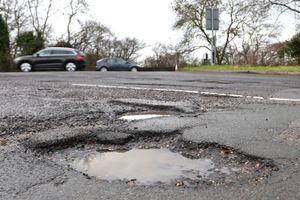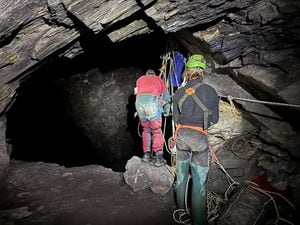One-day repair target for priority potholes in Shropshire and Mid Wales
Two councils in the region aim to repair dangerous potholes within a day of being alerted, according to RAC Foundation data.

Freedom of Information requests have revealed that both Shropshire and Powys County Councils use a 'risk based' approach to fixing potholes.
Potholes are estimated to cost drivers and insurance companies across the UK £12 million a year, with the AA calling the issue a national disgrace.
In Shropshire and Powys, not only will a pothole's size be considered, but also the potential impact on road users and volume of traffic.
That means deeper potholes on quiet lanes will be less of a priority than minor defects on a major route.
Powys Council has no specific criteria for investigating potholes, while Shropshire Council will only investigate potholes that are at least 2cm deep.
RAC Foundation director Steve Gooding said: “The total number of potholes being filled in might still be limited by a shortage of funding, but this approach at least means those that are most dangerous are fixed first.
“Those particularly vulnerable to potholes – cyclists and motorcyclists – might ask whether the speed of pothole investigation should be based solely on the risk to users.”
A spokesman for Shropshire Council said: "Shropshire Council has a duty to maintain the roads, but we can only fill a pothole if we know about it.
"The severity of the pothole and, therefore, the urgency of treating it, is determined by the risk it poses to road users.
"They will be treated immediately; within 5 days; within 20 days; or as part of planned maintenance works in the future."
In August, it was revealed that Powys County Council had a £40 million backlog in work to repair roads in the region that are in a poor condition.
A spokesman for Powys County Council said: “The council uses a risk based approach to fixing potholes. Whilst we have a stated 24-hour response we will under normal circumstances mobilise to remove dangerous hazards well within that timescale. However, we aim to mobilise within one hour with attendance on site within two hours.
“Where potholes are identified by staff who have the necessary resources with them at the time, an immediate temporary repair will be made. In other cases, they will cordon off the area with signage or in extreme cases they will remain on site to warn users until an appropriately equipped team arrive.
“It is generally accepted across all areas of business that some form of triage is necessary to manage demand and direct response. We are always happy to receive feedback on how this could best be achieved.”





